Browse Exhibits (70 total)
Nature: Science? Art? or Culture?
The interest on animals and natural creatures of people of Renaissance period in European continent was by far the most enthusiastic. The phenomena can be well exemplified by a comprehensive book of animals and other natural creatures by Conrad Gesner (1516-1565) in his Historia Animmalium. Gesner was a Swiss Renaissance humanist and a natural historian who conducted studies of nature in depth. Gesner composed four volumes of the Historia Animallium during his lifetime on quadrupeds, amphibians, birds, fish. An additional volume on serpents was added after his death. Gesner described this treatise as an encyclopedia of written and visual knowledge about the animal kingdom. Organized in alphabetical order, the book allows its reader to find any information they need about specific animals and creatures. The book is thought to be the very first comprehensive zoological study of its kind.
As an encyclopedia, Historia Animallium contains copious images of animals and yet, the purpose and the function of the images are hard to categorize under one theme. Even though the book itself functions as an encyclopedia and contains lots of medicinal information, it was not the only thing what Gesner wanted readers to focus on, for in some of the images, animals are not shown as objects for scientific observation. Animals such as a camel, lynx, and hyena are represented in specific contexts for better understanding of those animals. Camels are depicted together with man to show the animal’s characteristics and behavior in relation to human beings, while images of the lynx and hyena show their relationship to another animals and was pursuing the notion that images can deliver knowledge to their readers, and say something what can not be said by mere textual description. By contextualizing the images within what is written in the book, it is possible to get a step closer to the role and function of those images, whether cultural, religious, or scientific.
A century later, an English cleric Edward Topsell published a book History of Four-footed Beasts (1658) in English based on Gesner’s Historia Animallium, which made the work accessible to an English audience. Translated into several different languages, Gesner’s book Historia Animallium had considerable effect on later scholars of natural history, science, medicine, and art. At the same time, the book is a reflection of Gesner’s study on other scholars and humanist such as Pliny and Erasmus. This exhibition explores Gesner’s countless knowledge on four-footed beasts as communicated through Topsell’s English translation to question whether nature is art, science or culture, or all of them.
Paper's Creatures: Print & Metamorphosis in The History of Four-Footed Beasts, Serpents, and Insects
The History held, its authors thought, all God-made, animal things in its ink and paper. Printed in 1658 by Ellen Cotes at her shop in Aldersgate Street, Barbican, London, and edited by the physician John Rowland, The History records the world’s beasts in some twelve hundred pages of text and woodcut illustrations. The contents were long in collecting—the whole age’s work. Its first two parts reprint Edward Topsell’s 1607 and 1608 treatises The History of Foure-Footed Beasts and The History of Serpents, both redactions of the Züricher Konrad Gesner’s then hundred-year-old Historiae Animalium. The third part, Thomas Moffett’s book of bugs, Theatrum Insectorum, was Englished by Rowland for the occasion. The folio was printed on a shoestring. The paper is too thin; the ink too runny. Its rectos and versos do not completely separate: ink bleeds from one side of the leaf to the other. Shadowing through the paper, into the text’s letters, and into one another, the beasts find new shape; they metamorphose.
Philip Hall Lecture Notes on Group Theory
This material is a set of unpublished, hand-written lecture notes composed by Philip Hall (1904-1982). They were written in the 1960s at the University of Cambridge, where Hall was a professor at King’s College.
Popular Politics in World War I Sheet Music
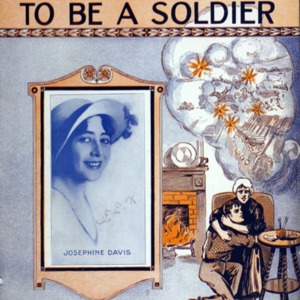
Drawing on materials found in The Louis and Jodi Atkin Family Collection and the Gaylord Music Library Sheet Music Collection, this exhibit investigates American political attitudes during World War I as revealed in the popular music of the time.
Learn how the musical and visual rhetoric of sheet music changed following the U.S.A.'s entrance into WWI.
Find out about America's dual vision of France as both a wartorn nation and a cosmopolitan center.
Understand the mixed feelings of German-American citizens, caught between loyalties.
See how St. Louis publishers paid tribute to the the American armed forces.
For questions and concerns, please contact music@wumail.wustl.edu
Primitivism: A Study of Cultural Appropriation
Primitivism was a breath of fresh air for the modern art movement. German and Russian artists such as Max Pechstein, Otto Müller, and Alexej Jawlensky admired the simplified sculptural forms of African and Oceanic scultptures, apparently mysterious religious rituals, and ostensible freedom from modern amenities of non-Western cultures. They saw these so-called exotic forms as the solution for the stagnation of modern European culture and academic art tradition. They applied elements from Oceanic and African cultures — as well as rural European folk traditions — to Arcadian scenes of humans harmonious with nature to suggest a connection between the simplicity of rural life and the authenticity of their emotions. However, this idealized notion that non-Western cultures were closer to nature was just a projection of the superiority complex of European artists. Artists who incorporated these so-called primitive elements did not attempt to learn their historical or cultural contexts; rather, they appropriated the aesthetic qualities of religious and cultural objects to fit their own ideologies of a so-called primitive utopia.
The three artists in this exhibition appropriated elements from a variety of cultures. Otto Müller’s studio painting Three Girls in a Wood, c. 1920 (Fig. 1) depicts a scene of nude women amongst a lush forest. However, this space is clearly an artificial place constructed in the studio, where these perfectly arranged women coexist with nature on single plane of burlap. These figures, whose faces are a pastiche of non-Western visual elements, exist in absolute harmony in their clearly artificial triangular formation. Müller appropriates the geometricized, outlined forms from Egyptian and Indian friezes — the most simple, “primitive” way a figure can be rendered. In Spring, 1912 (Fig. 2), Alexej Jawlensky incorporates both African and Byzantine visual elements to create a female allegorical figure. The geometrized facial features of an African mask are applied to the iconic format of a Byzantine Madonna, which suggest that non-Western and Russian peasant women share an inherent affinity for nature. He uses bright, Fauve-like colors to connect the woman — the allegorical figure of spring — to a season of rebirth and fertility. The last work, Pechstein’s Sunset (1921 (Fig. 3) depicts Oceanic women dancing and facing the sun overcome with euphoria. However, Pechstein strips them of their individualistic features and costumes them in European dress. Like Spring, the title of this work references these cultures supposed connection with nature.
In search of an escape from the confines of art academies and the urbanity of modern Germany, all three artists turned to either “primitive” art or folk wart to invigorate a sense of originality into their works. However, this notion that the “crude” forms of non-Western or folk art were more authentic was only an extension of the stereotypes already existing of cultures outside of urban Germany. While Müller imagined an artificial space where women were as “natural” as the burlap they were painted on, Jawlensky and Pechstein combined elements from non-Western and folk art to imply that they shared a sense of simplicity and intrinsic emotional connection to nature.
Professor Kevin Herbert’s Slide Collection
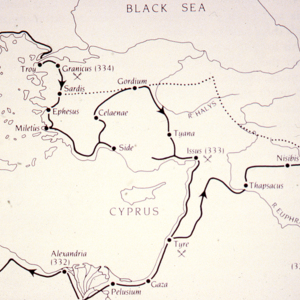
Kevin Herbert began teaching classics at Washington University in St. Louis in 1962. He served as curator of the Wulfing Coin Collection from 1968 to 1994 and served as chair classics from 1982 until his retirement. He was named professor emeritus in 1992 but continued to teach, primarily in University College until 2008. For more information, please see: https://source.wustl.edu/2015/02/obituary-kevin-herbert-professor-emeritus-of-classics-93/
University Archives hold the Kevin Herbert Papers, one series includes his slides used in teaching. A small selection are made available here in three of his categories: Alexander & Hellenistic World – Survey; Cities of Sicily – Peloponnesian War; and Roman Myths, Heroes, Buildings.
Remembering Mississippi Freedom Summer

Commemorating the 50th anniversary of Freedom Summer, Remembering Mississippi Freedom Summer highlights primary source materials from the Washington University Libraries Film & Media Archive’s newly acquired Richard Beymer Collection and inaugural Henry Hampton Collection.
Copyright © 1964 Richard Beymer. All rights reserved.
Selections from the Newman Numismatic Portal
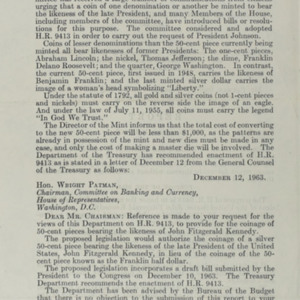
The Newman Numismatic Portal is located at Washington University in St. Louis and funded by the Eric P. Newman Numismatic Education Society. The NNP is dedicated to becoming the primary and most comprehensive resource for numismatic research and reference material, initially concentrating on U.S. Coinage and Currency.
Sheet Music from the 1904 World's Fair Collection
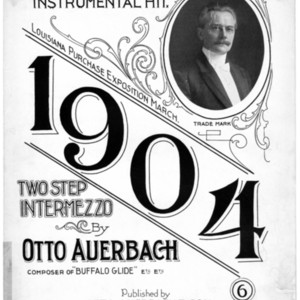
The 1904 World's Fair, more properly called the Louisiana Purchase Exposition, brought visitors from around the globe to St. Louis, Missouri. Gaylord Music Library's sheet music collection includes about 70 works inspired by the fair. These pieces represent the variety of musical genres in vogue at the turn of the twentieth century, documenting the cultural, political and social mindset of this time and place.
Items in this collection are alphabetized by title.
For more information, visit our web exhibit about music at the fair, Class, Race, & Sheet Music at the Louisiana Purchase Exposition.
Read more about Gaylord Music Library's special collections here.
Washington University Libraries is working to address broken links in this collection. If you need to access a PDF with a broken link, please contact music@wumail.wustl.edu
Sheet Music from the Gottschalk Collection
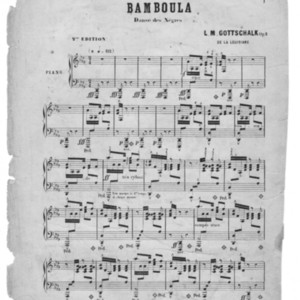
Sheet music from the Gottschalk Collection.
Read more about Gaylord Music Library's special collections here.
Washington University Libraries is working to address broken links in this collection. If you need to access a PDF with a broken link, please contact music@wumail.wustl.edu
